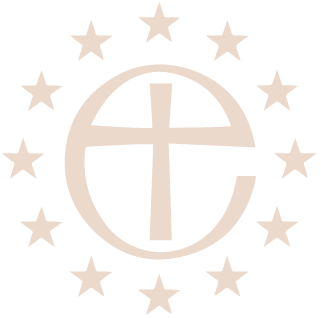
Feast of the Presentation of Christ (Candlemass) Feb 2nd 2020. Readings: Malachi 3, 1-5; Luke 2, 22-40.
Revd. Canon Leonard Doolan – St Paul’s Athens
The temple in Jerusalem must have been full of bird song. Families who had 40 day old boys would bring their sons to the priests to be offered to God – the first fruits of their creation. All these families would be around the temple precincts, surrounded by bird song. It must be so, because all these families had to bring an additional offering – 2 doves or 2 young pigeons.
How many young 40 day old baby boys must have been around the place – what a noise from all that screaming, and added to that the sound of birds.
Our Lord was not alone. Jesus would not have been the only boy here. There could have been dozens, scores, hundreds.
We are given a privileged glimpse into one particular family, one particular child, in all the crowds and amid all the pigeons and doves – I wonder how many got away and flew around all over the place, and in their panic depositing their droppings on people and holy items alike.
It takes the eye of the artist – perhaps the precision of a photographer to take a picture of just one really significant event in a melee of activity; a keen eye, a real observer of detail. For us today, this is the gospel writer St. Luke. He paints a picture for us in words about a happening, an event, in the life of a Jewish family in the Jerusalem temple. Η Υπαπαντή του Σώτηρος – the Presentation of Christ, Candlemass. The gospel writer presents this scene as if nothing else were going on around it – such is the specialist eye of the artist, the glimpser of faith.
This is a Jewish 40 day ceremony. How many significant biblical events involve the number 40. How many ceremonies in Orthodox practice happen 40 days after a special or significant event. Lent-Easter to Ascension – Christmas Day until Candlemass. This is a Jewish ceremony, because these are Jewish parents, and this is a child of a Jewish mother’s womb. This is what matters – and it fulfils the age old prophecy that salvation comes from the Jews. Please note, it comes from the Jews; not the same as salvation comes through Judaism.
So in the mayhem an old man and an old woman come to pre-eminence. His words are recorded; her words are not. His words are repeated every time we celebrate Evening Prayer, Esperinos, Vespers. In Latin we call it the Nunc Dimittis. Both these elderly people are presented to us as signs of faithful and patient hope; signs of all those who wait for signs; signs that are perceived only by those who have eyes to see and ears to hear; those who spot significance in a crowded space – the artist, the photographer, the poet. Simeon and Anna are signs to you and me, and about how we too must be expectant and hopeful. These two grey headed and wrinkled human beings, brimming with youthful faith and the dynamism of fresh hope, bring us full circle from the Advent Sunday that we celebrated at the beginning of this holy season, that first Sunday in the dark, winter, purple-coloured season of hope, that ends in the floods of light that irradiate the words of Simeon and the praise of Anna.
Christ, the Lamb of God, is brought to the place where the lambs were slaughtered by the priests every year for the Passover. How redolent is this happy and joyful occasion of the pain and sorrow of Good Friday. To inverse a well-known idiom – every silver lining has a cloud! Simeon knows this. He has insight which is a godly insight. In his joy he knows that the mother of this child will endure what no mother would ever wish to endure – the death of her child. Simeon is someone who understands the work of the alchemist. He knows how to mix in his crucible joy and sorrow, beginning and end, life and death – darkness and light, sadness and rejoicing, crucifixion and resurrection. This is the wisdom of the elderly – this, the wisdom of patient faithfulness in God.
In generations, even centuries beforehand, the prophet Malachi had foretold that the Lord would come to his temple; that the Lord would be the refiner and purifier of silver, the refiner of gold and silver until like these precious elements human beings can be presented as offerings to the Lord. This is the alchemy of transforming lives through faith. Today we read of the Lord being presented in the temple; soon we will read and learn that the curtain of the temple is torn apart on Good Friday, as the true Passover lamb is sacrificed once and for all in order that we may find our way to God – homeward bound to the one whose arms are always outstretched to receive us, and who constantly waits for our return.
The Presentation of Christ in the Temple may be an ending of a season – a season that began back in November 2019 on Advent Sunday – but it is also excitingly the beginning of an adventure of faith. ‘For my eyes have seen your salvation, which you have prepared before the face of all peoples, a light for revelation to the Gentiles and for glory to your people Israel.’
Of all the lessons of faith we can learn from this gospel account of our Lord at the temple, maybe one of the most important is an increase in our observational powers – powers that allow us to see in our crowded streets and cluttered lives the little signs of God’s glory shining in our midst – like Simeon identifying the Christ in the busy-ness of the temple, or like Anna who praised God for all that she had been waiting for; waiting not for a few months, or a few years, but for all 84 years of her life. However many years you have behind you – it is not too late!


No Comments